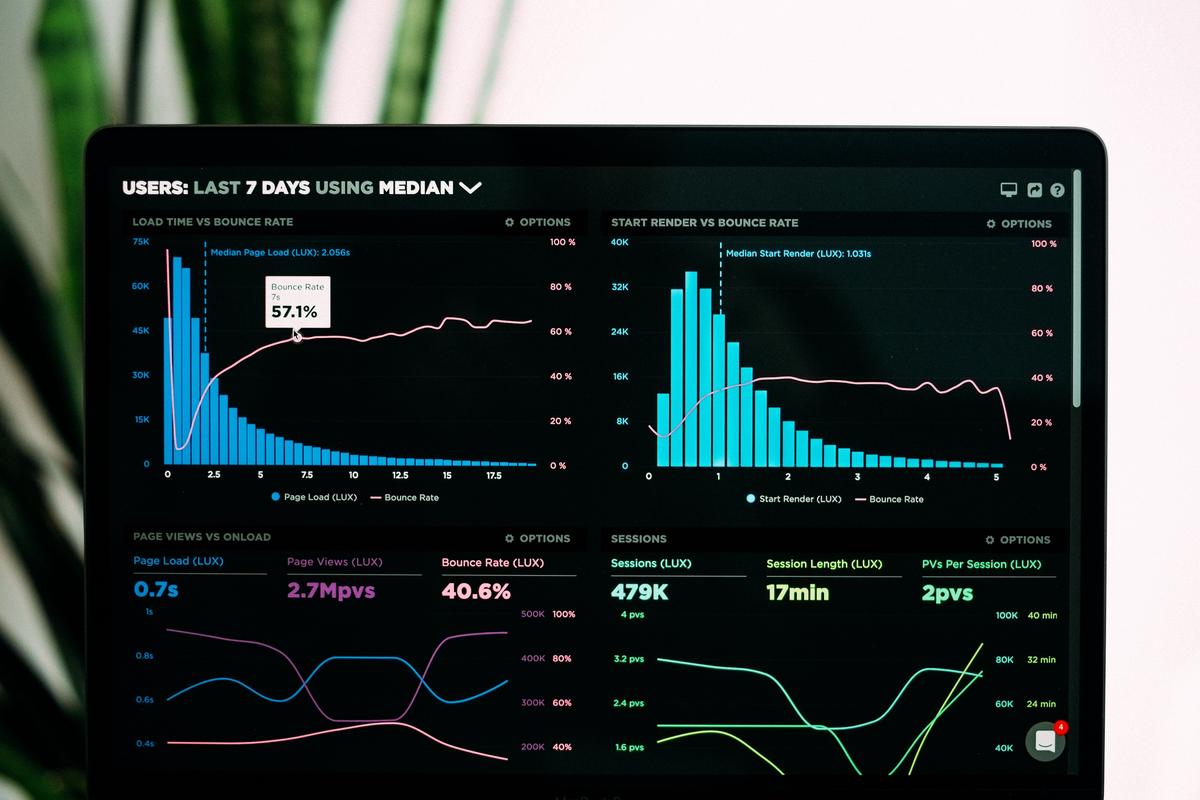BetterYouJourney.com is a participant in the Amazon Services LLC Some of the links in our posts are affiliate links. Click here to see full Disclosure.
From Wall Street icons to newbie investors sitting at home, everybody has started venturing into the exciting arena of online stock trading. With the digital revolution simplifying the once complex activity of trading, everyone can now obtain unfiltered access to global financial markets. However, starting this journey requires a thorough understanding, not just of the basic trading principles, but also of how online trading works, the platforms you can employ, the strategies to imply, and most importantly, the risks to observe. This comprehensive guide aims to provide a platform of information covering these very aspects of online stock trading so that you can make informed decisions and trade like a pro.
Understanding the Basics of Stock Trading
Understanding Stock Trading Basics
Stock trading involves the buying and selling of shares, which are essentially small pieces of ownership in a company. Companies issue stocks to raise money for various reasons, such as funding operations or expansion projects, and investors purchase these shares with the expectation that they will increase in value or provide income through dividends. Online stock trading platforms have made it possible for anyone to become a trader from the comfort of their own homes.
Understanding Trading Terminology
There are several important terms and concepts associated with stock trading. A ‘bid’ is the price at which a trader is willing to purchase a stock, while the ‘ask’ price is what a seller is willing to accept. ‘Limit orders’ allow traders to specify the exact price at which they are willing to buy or sell a stock. ‘Market orders’ are instructions to buy or sell at the best available price.
Types of Stocks
There are two main types of stocks: common and preferred. Common stocks generally enable the holder to vote at shareholder meetings and to receive dividends. Preferred stockholders generally have a higher claim on assets and earnings than common stockholders. This means that preferred stockholders receive dividends before common stockholders.
Risks Involved in Stock Trading
While successful stock traders can make impressive returns, there are also significant risks involved. Stock prices can fluctuate based on a variety of factors including economic indicators, news about the company and changes in market sentiment. It’s also possible to lose more than the amount originally invested if using techniques such as trading on margin, where you borrow money from a broker to purchase stocks.
Advantages of Stock Trading
One of the main advantages of stock trading is the potential for financial gain. When stocks are bought at a low price and sold at a higher one, the trader makes a profit. Another benefit is the ability to diversify an investment portfolio. Diversification can help reduce risk by spreading investments across a range of different asset classes and industry sectors.
Disadvantages of Stock Trading
There are also a number of potential disadvantages to stock trading. The risk of financial loss is one of the most obvious. Trading can be time-consuming and complex, requiring a significant level of knowledge and expertise to do successfully. Additionally, there can be substantial costs involved, including broker commissions and fees.
Online Stock Trading
The rise of online trading has made it accessible to practically anyone with an internet connection. These online platforms offer lower fees and commissions than traditional brokers, as well as advanced tools and resources to help with making trading decisions. However, it’s still important to extensively research any platform before signing up, and beginners should consider starting with a demo account to get familiar with the process.
Whether you are just beginning your investing journey or have extensive experience in the market, it’s paramount to grasp the fundamental aspects of stock trading. Spending time to educate yourself on the different classifications of stocks, comprehending the potential risks and rewards, alongside familiarising yourself with various online trading tools can set the foundation for successful online trading.

Photo by lukechesser on Unsplash
How Online Stock Trading Works
Navigating the Landscape of Online Stock Trading
Online stock trading primarily involves utilizing powerful digital trading platforms which permit individual, or retail, investors to buy and sell stocks remotely – essentially from any location with internet access. Provided you have a trading account established with an online brokerage firm, anyone can immerse themselves in the world of online stock trading through the convenience of a computer or smartphone.
The Role of Online Brokerage Firms
Online brokerage firms are essential for online stock trading. These organizations act as intermediaries that execute buy and sell orders on behalf of investors. Online brokers purchase and sell shares in exchange for a fee, known as a commission. They provide a digital platform for investors to conduct trade transactions, and access relevant information about the stock market, including price changes, market news, and analytics.
The Trading Process
Online trading begins by setting up a trading account with a brokerage firm. After the trader has deposited money into this account, they can start trading. An investor gives buy or sell orders through the brokerage firm’s trading platform, specifying the number of shares to be bought or sold and the price at which the transaction should be executed.
If the investor wishes to buy a stock, they will place a ‘buy order’, specifying the maximum price they’re willing to pay per share. If they want to sell a stock, they will place a ‘sell order’, specifying the minimum price they’re willing to accept per share.
Market Orders and Limit Orders
There are two main types of orders: market orders and limit orders. A market order is an instruction to buy or sell a stock immediately at the best available current price. While a market order ensures that the trade will occur, the final price at which the stock is bought or sold may not be predictable, particularly in volatile markets.
On the other hand, a limit order sets a specific price for the stock. If an investor places a limit order to buy a stock at $20, the order will only be executed if the stock’s price drops to $20 or lower. Similarly, if an investor places a limit order to sell a stock at $80, the order will only be fulfilled if the stock price goes up to $80 or higher.
Buying and Selling Stocks Online
Once an order is placed, the brokerage firm routes the order to a stock exchange, which then finds a buyer or seller to complete the transaction. Once the order is matched with a suitable buyer or seller, and the transaction is completed, the brokerage firm updates the investor’s account to reflect the new holdings and the leftover cash balance.
In most cases, online trading is instantaneous and occurs in real time. However, large and complicated trades may take more time to process. Moreover, trades placed outside normal market hours will be processed once the market reopens.
Managing Risks in Online Stock Trading
Understanding risk is essential in online stock trading as it comes with the possibility of losing your entire investment. Crucial risk management strategies, such as placing stop loss orders or diversifying your investment portfolio, can significantly help online traders.
More advanced techniques, like short selling, options trading, and leverage trading, pose their unique risks. These methods need a comprehensive grasp of market operations. Therefore, novice traders are often recommended to begin with the simple process of buying and selling of stocks before venturing into more complicated trades.

Choosing the Best Online Trading Platform
Mastering Online Trading Platforms
Online trading platforms are software systems that facilitate the buying and selling of securities such as stocks, bonds, and currencies. Usually offered by brokers, these platforms equip traders with the necessary tools to analyze and execute trades in real-time. They provide access to global financial markets 24/7, significantly democratizing the field of investing and providing a powerful tool for managing the risks discussed earlier.
What to Look for in Online Trading Platforms
The best online trading platforms will typically tick a pretty comprehensive checklist of features. Firstly, user-friendliness is crucial, especially if you’re a beginner. Good platforms have intuitive interfaces making it easy to buy and sell securities. Secondly, these platforms offer a wide range of assets to trade. This includes stocks, bonds, commodities, and currencies. Thirdly, the best platforms provide a variety of analytical tools, including charting software, market news, and historical data for research. Lastly, platforms should have responsive customer support services providing guidance when you need it.
Assessment of a Trading Platform: Fees and Commissions
Cost matters in online trading. While some platforms provide free trades on select transactions, others may charge commissions or fees. Always assess the cost-effectiveness of the platform relative to the services you’re getting. Additionally, look for hidden costs such as inactivity fees and withdrawal charges, which could eat into your investment earnings.
Platform Accessibility and Mobility
In today’s fast-paced world, having a trading platform that offers a mobile app is certainly a big plus. This allows you to react quickly to market changes, even when you’re on the go. Top-notch platforms have made their software accessible via different devices while ensuring fairness and security in transactions.
Analyzing User Reviews, Ratings, and Experience
User experience can provide important insights about a platform’s reliability and efficiency. Reviews usually cover the platform’s ease of use, customer service, trading options, and cost-effectiveness. Look at the structure of the reviews. If a platform has many negative reviews, it might be best to steer clear. Conversely, platforms with high positive feedback likely offer better service and should underscore your shortlist.
Platform Regulation and Security
Trading platforms must prioritize the safety of their users’ money and sensitive data. As such, look for platforms that employ high-level encryption techniques to protect against potential data breaches. Additionally, ensure the platform is heavily regulated by respected financial sector oversight bodies. This ensures they are obliged to follow strict operating rules and standards and provide extra security for your investments.
Educational Tools and Resources
If you’re new to online trading, platforms that offer educational resources can be beneficial. These tools can help you understand various trading strategies, market dynamics, and risk management. Some even provide virtual or demo accounts where users can practice trading using virtual money, thus providing a low-risk environment for learning and honing trading skills.
Keep in mind, the ‘ideal’ online trading platform is subjective and largely dependent on personal requirements.
It’s important to understand your own financial aspirations and constraints, and then to evaluate potential platforms based on these personalized factors. Strive to find a platform that is not only cost-effective but user-friendly, promptly responsive in customer support, and offers a diverse range of trading options.

Strategies and Tips for Successful Online Stock Trading
Diving into the Concept of Online Stock Trading
The act of online stock trading entails the digital purchase and sale of company stocks. This process is facilitated by online platforms, usually offered by brokerage firms. As technology has evolved at a rapid pace, the accessibility of stock trading has dramatically increased for the general public, causing a shift from the traditional floor trading in stock exchanges to digital trading systems.
Risk Management in Online Stock Trading
An integral part of online stock trading is risk management. Without it, traders stand a chance of losing their investments. Diversification is one common strategy that involves selling a variety of different stocks to spread the risk. The idea behind it is to invest in different areas that would each react differently to the same event – when some areas are losing; others might be winning, thus balancing the effects. Apart from diversification, setting a stop-loss order is another risk management strategy that traders use. This involves setting a predetermined selling point for a stock to avoid substantial losses.
Understanding Market Trends
To attain success in online stock trading, understanding and following market trends is crucial. Traders can analyze previous price patterns and volumes of stocks to predict future market trends. This process, known as technical analysis, uses specific tools such as moving averages, trend lines, and swing highs and lows.
Predicting Future Market Behavior
Given that stock markets are influenced by various factors – from economic indicators to geopolitical events and corporate earnings – predicting future market behavior can be challenging. However, traders can rely on fundamental analysis to make predictions. This involves studying everything from the overall economy and industry conditions to the financial health and management of companies. Market sentiment, which refers to the overall attitude of investors toward a particular security or financial market, is another critical factor in predicting market behavior.
Maximizing Investment Returns
Maximizing return is the primary goal of any investment. For online stock trading, this means buying stocks cheap and selling them at a higher price. This buy low, sell high strategy may seem straightforward, but it requires timing and patience.
Insights from Professional Traders
Insights from professional traders can also provide a helpful guide in online stock trading. Some successful traders believe in cutting losses quickly and allowing profits to run. They emphasize that it is crucial to have a solid exit strategy and not let emotions dictate trade decisions. In addition, understanding that no one can control the market and being content with making a “good enough” decision instead of a perfect one can go a long way in successful trading.
The exciting realm of online trading holds the potential for significant returns, but it also carries a high degree of risk. It is crucial to have a well-outlined trading plan in place, and then remain dedicated to following it. Equally essential is the commitment to ongoing education – learning about the markets, exploring various trading strategies, understanding analytical techniques, and being aware of one’s own trading strengths and weaknesses.

Understanding and Managing the Risks of Online Stock Trading
Taking Note of the Risks in Online Stock Trading
While the world of online stock trading is thrilling and offers opportunities for profit, it is not without its challenges. One of the primary risks involves the safety of your investments and personal details. Cyber threats, including hacking, identity theft, and fraud, loom large in the digital age. Cybercriminals can infiltrate online trading systems to execute unauthorized trades, manipulate share prices, or steal confidential information. Additionally, phishing scams can deceive traders into disclosing their login details, endangering their accounts.
As a measure to neutralize these security concerns, it is crucial to engage with trustworthy and reliable trading platforms. These platforms integrate solid encryption protocols to shield your data and transactions. Simple steps like regular software updates, using a secure internet connection, and steering clear of phishing emails play a significant role in defending your trading account from online threats. Activating two-factor authentication (2FA) serves as an additional security layer for your account.
Financial Risks in Online Stock Trading
The realm of online stock trading also exposes investors to a variety of financial risks. Market risk, also known as systematic risk, refers to potential losses due to factors that affect the overall performance of the financial markets. Unpredictable factors like economic indicators, geopolitical events, and natural disasters can cause significant fluctuations in stock prices.
Another notable risk is liquidity risk, which arises when an investor cannot quickly buy or sell a stock without causing a significant change in its price. Stocks with low trading volumes or those listed on smaller exchanges are typically more susceptible to this risk. The use of leverage or margin trading can amplify profits but can also magnify losses, leading to substantial financial risk.
Investors may also face interest rate risk, where changes in interest rates can negatively affect the stock prices. For instance, a rise in interest rates often leads to a fall in stock prices as borrowing costs increase, which can compromise a company’s profit and the attractiveness of its shares.
Mitigating Risks in Online Stock Trading
Risk management is essential when trading stocks online. Diversification, or spreading your investments across a variety of stocks, sectors, or asset classes, is a common strategy to moderate risk. It helps to reduce the impact of any single investment’s poor performance on your overall portfolio.
Risk can also be managed by setting stop-loss orders, which are designed to limit an investor’s loss on a stock position. A stop-loss order automatically sells a stock when it reaches a certain price. It serves to cap the potential loss on a trade, providing a safety net against sudden market downturns.
Investors can also manage their risk by regularly reviewing their investment portfolio and making adjustments as necessary. This includes not only the selection of various stocks but also a consideration of their balance in relation to one another. For instance, if one sector is doing very well while another is lagging, it may be time to re-balance your portfolio to take advantage of the thriving sector while limiting exposure to the struggling one.
Finally, education and knowledge play a key role in risk mitigation. Understanding the market and individual stocks, keeping abreast with economic news, and learning about investment strategies can help you make informed decisions in online stock trading.

Having traversed the landscape of online stock trading in detail, it becomes clear that its success is influenced by a cumulative knowledge base. From understanding its basic tenets to navigating various trading platforms, every element has its unique significance. It’s not just about buying low and selling high, but knowing when and how to do so. It’s about leveraging the benefits while simultaneously circumventing the pitfalls inherent in this digitized form of trading. Armed with the understanding of these various facets and a strong toolkit of effective strategies, any enthusiastic investor can not only survive but thrive in the dynamic environment of online stock trading.








